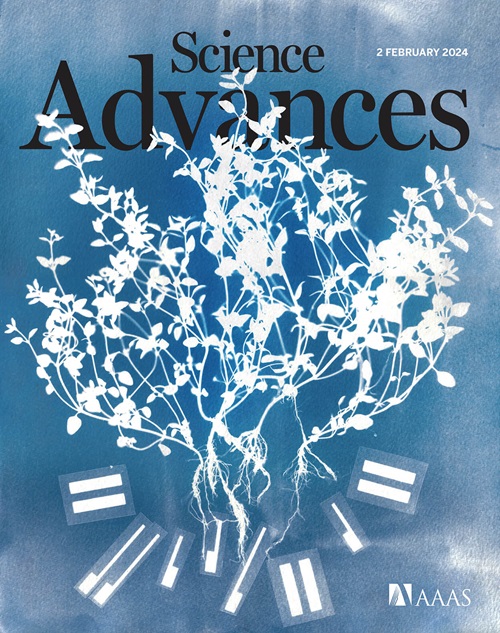一维纳米线的工程手性
IF 11.7
1区 综合性期刊
Q1 MULTIDISCIPLINARY SCIENCES
引用次数: 0
摘要
手性在DNA、蛋白质和其他生命组成部分中的起源和功能是生物学中的一个核心问题。对电子通过手性分子传递的自旋极化和磁化的观察,统称为手性诱导自旋选择性效应,表明手性改善了电子转移。通过对LaAlO 3 /SrTiO 3界面电导率的可重构纳米级控制,我们创建了明显缺乏镜像对称性的手性电子势。对这些手性纳米线的量子输运测量表明,在高磁场(高达18特斯拉)和振荡传输共振中,电子对的增强持续存在,这是磁场和化学势的函数。我们将这些共振解释为由手性区域内的工程轴向自旋轨道相互作用引起的。具有这种特性的一维电子波导创造了通过模拟量子模拟来测试一维几何中手性和自旋极化电子输运理论的机会。本文章由计算机程序翻译,如有差异,请以英文原文为准。
Engineered chirality of one-dimensional nanowires
The origin and function of chirality in DNA, proteins, and other building blocks of life represent a central question in biology. Observations of spin polarization and magnetization associated with electron transport through chiral molecules, known collectively as the chiral induced spin selectivity effect, suggest that chirality improves electron transfer. Using reconfigurable nanoscale control over conductivity at the LaAlO3/SrTiO3 interface, we create chiral electron potentials that explicitly lack mirror symmetry. Quantum transport measurements on these chiral nanowires reveal enhanced electron pairing persisting to high magnetic fields (up to 18 tesla) and oscillatory transmission resonances as functions of both magnetic field and chemical potential. We interpret these resonances as arising from an engineered axial spin-orbit interaction within the chiral region. The ability to create one-dimensional electron waveguides with this specificity creates opportunities to test, via analog quantum simulation, theories about chirality and spin-polarized electron transport in one-dimensional geometries.
求助全文
通过发布文献求助,成功后即可免费获取论文全文。
去求助
来源期刊

Science Advances
综合性期刊-综合性期刊
CiteScore
21.40
自引率
1.50%
发文量
1937
审稿时长
29 weeks
期刊介绍:
Science Advances, an open-access journal by AAAS, publishes impactful research in diverse scientific areas. It aims for fair, fast, and expert peer review, providing freely accessible research to readers. Led by distinguished scientists, the journal supports AAAS's mission by extending Science magazine's capacity to identify and promote significant advances. Evolving digital publishing technologies play a crucial role in advancing AAAS's global mission for science communication and benefitting humankind.
 求助内容:
求助内容: 应助结果提醒方式:
应助结果提醒方式:


